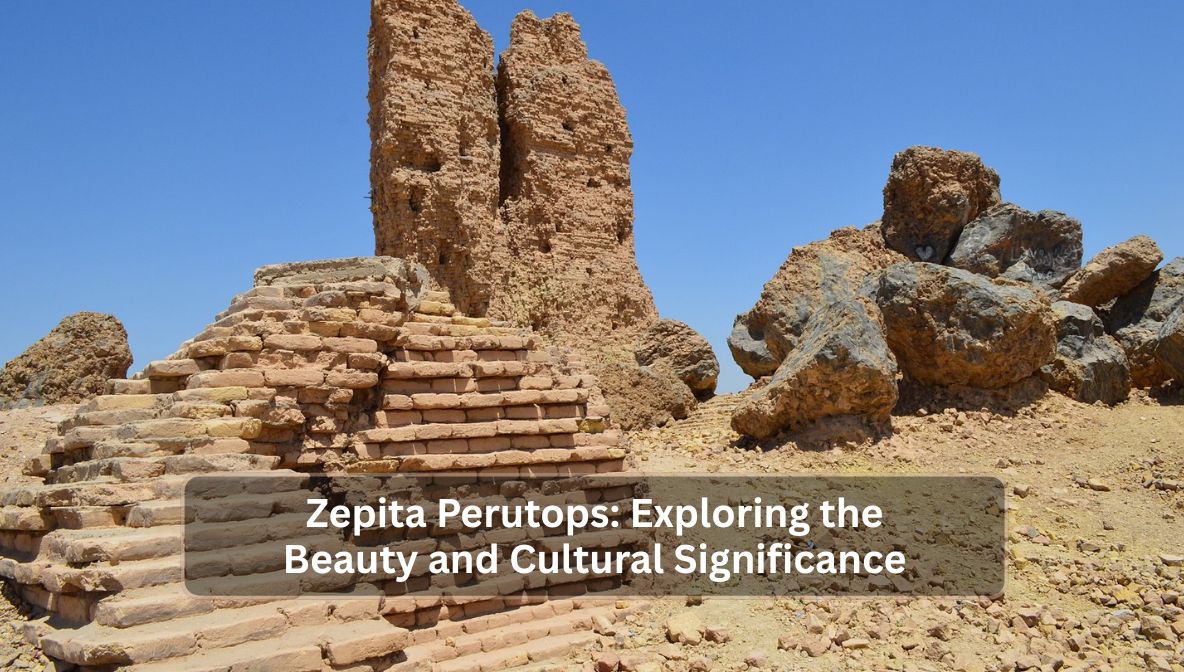Zepita Perutops is a term that has recently been gaining attention, especially among those interested in Peruvian culture, history, and tourism. While “Zepita” refers to a small town located in the Puno region of Peru, “Perutops” can be seen as a coined term that blends “Peru” and “top,” implying a focus on top or best elements related to the area. This blog post will take a deeper look into Zepita and what makes it one of the top hidden treasures in Peru, be it through its rich culture, unique geographical location, or untapped potential in tourism and biodiversity.
Zepita is not just another small town; it’s a window into Peru’s ancient Andean heritage. From the traditions of the Aymara people to the breathtaking scenery of Lake Titicaca nearby, Zepita serves as a cultural and natural hub waiting to be explored. In this post, we will answer common questions, provide useful comparisons, and break down everything you need to know about Zepita Perutops.
Key Points:
-
Zepita is a culturally rich town in southern Peru.
-
Perutops refers to top features or highlights of Peru.
-
Zepita Perutops combines heritage, nature, and local life.
What Makes Zepita Unique Among Peruvian Towns?
Zepita stands out due to its geographical location and its preservation of traditional Andean life. Located near the border with Bolivia and not far from Lake Titicaca, the town offers stunning high-altitude landscapes and an immersive cultural experience. Unlike popular Peruvian destinations such as Cusco or Lima, Zepita remains relatively untouched by mass tourism, allowing visitors to explore authentic local life.
One fascinating aspect of Zepita is the presence of pre-Columbian ruins, such as small archaeological sites that are largely unknown to the public. This adds a layer of historical mystery and academic curiosity to the area. Local festivals, mostly based on indigenous customs, are celebrated with colorful parades and spiritual rituals that reflect the deep cultural roots of the Aymara people.
Moreover, Zepita is a gateway to rural tourism in Peru. While it may not have luxury hotels or fancy restaurants, it offers home stays, agricultural experiences, and interaction with the locals that provide a truly meaningful travel experience. These qualities make it a Perutop—one of Peru’s top hidden gems.
How Does Zepita Compare to Other Tourist Destinations in Peru?
To understand the significance of Zepita, it’s useful to compare it with more well-known Peruvian cities:
| Feature | Zepita | Cusco | Arequipa |
|---|---|---|---|
| Tourist Volume | Low | Very High | Medium |
| Cultural Authenticity | Very High | High | Moderate |
| Cost of Travel | Low | Medium | Medium |
| Natural Attractions | Nearby Lake Titicaca | Sacred Valley | Colca Canyon |
| Infrastructure | Basic | Well-developed | Developed |
As shown in the table above, Zepita may lack infrastructure compared to Cusco or Arequipa, but it offers a more authentic and cost-effective experience. If you’re a traveler looking to step off the beaten path, Zepita might be your ideal destination.
Reminder: Zepita is best suited for those who value cultural depth and simplicity over luxury and convenience.
What Can You Do When Visiting Zepita?
Despite being a small town, there’s a surprising variety of activities and experiences to enjoy in Zepita:
-
Cultural Immersion – Participate in local Aymara ceremonies and witness traditional dress and dance during town festivals.
-
Ecotourism – Explore the surrounding landscapes that include lakes, hills, and agricultural fields.
-
Visit Religious Sites – Zepita is home to colonial churches like Iglesia de San Pedro, which blends Spanish and indigenous styles.
-
Trek and Adventure – The high-altitude terrain around Zepita is perfect for light trekking and nature photography.
-
Learn and Volunteer – Some NGOs and community programs welcome international volunteers to teach English or assist in local agriculture.
The town may not have organized tourist packages, but that is part of its charm. Visitors usually rely on local guides or simply explore on their own, with the help of warm and welcoming residents.
Note: Always bring warm clothing when visiting Zepita; temperatures can drop significantly at night.
Why Is “Perutops” Associated With Zepita?
The term “Perutops” is not officially recognized but is popularly used in blog content and travel forums to denote places or features that are top-rated or must-visit in Peru. When paired with Zepita, the phrase “Zepita Perutops” signifies the top cultural and natural experiences the town has to offer.
Here’s a comparison of some top “Perutops” destinations in Peru and how Zepita stands alongside them:
| Category | Machu Picchu | Lake Titicaca | Zepita |
|---|---|---|---|
| Known For | Inca Ruins | World’s Highest Lake | Cultural Authenticity |
| Visitor Experience | Guided Tours | Boat Excursions | Local Immersion |
| Tourism Level | Very High | High | Low |
| Unique Feature | Wonder of the World | Floating Uros Islands | Aymara Traditions |
This table shows how Zepita offers a unique experience that complements, rather than competes with, other destinations in Peru. It’s not about being better, but about offering something different and deeply rooted in tradition.
Is Zepita Safe and Easy to Reach?
Safety is often a concern for travelers venturing into lesser-known areas. Zepita, while rural, is considered relatively safe for travelers. However, like in all places, one should exercise basic caution—avoid traveling at night, keep valuables secure, and try to blend in rather than stand out.
Getting to Zepita can be a bit of a journey. Most travelers fly into Juliaca or Puno, and then take a bus or car ride to Zepita. The roads are not always paved, and travel times can be longer than expected due to the terrain.
Public transport exists, but it’s best to plan your travel during daylight and possibly with a guide if it’s your first visit. Spanish is commonly spoken, and Aymara is the local native language, so having a few basic phrases can help immensely.
Conclusion
Zepita Perutops is more than just a location; it’s an experience rich in culture, history, and untouched natural beauty. While it may not be on the mainstream tourist maps, it offers something far more valuable—authenticity. From its friendly people to its cultural celebrations and scenic surroundings, Zepita truly is a Perutop that deserves more recognition.
For travelers seeking to go beyond the typical and immerse themselves in a real Andean experience, Zepita is the hidden treasure they’ve been looking for.
FAQ’s
1. What is the best time to visit Zepita?
The best time to visit is between May and October when the weather is dry and suitable for outdoor activities.
2. Is Zepita suitable for solo travelers?
Yes, but basic Spanish knowledge and prior research are recommended for a smoother experience.
3. Can I find accommodations easily in Zepita?
There are small guesthouses and family homestays, but booking in advance is advised.
4. What are the must-see attractions in Zepita?
Cultural festivals, San Pedro Church, and local markets are highlights.
5. How do I reach Zepita from Lima?
Fly to Juliaca or Puno, then travel by road to Zepita (approx. 4–5 hours by car or bus).




